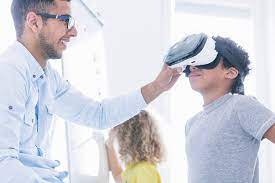Education is changing, even as it continues to be an important part of a child’s life. Embracing Technology and Innovation.
As technology evolves, schools will continue to adapt to meet changing student and teacher needs.

1. Project-Based Learning
Project-based learning (PBL) is a teaching method that engages students in personally meaningful and real-world projects over extended periods of time – from weeks to semesters. The goal is to provide students with a deeper understanding of content, 21st century skills like critical thinking and collaboration, and authentic learning experiences.
The Buck Institute for Education describes PBL as “an instructional approach that enables learners to investigate and respond to an authentic, engaging, and complex problem or challenge.” Here, for example, are some snapshots of student-driven learning in action:
2. Personalised Learning
For many educators, personalized learning is a way to give students more autonomy and a feeling that their teachers understand them.
The new push for personalized learning is partly a response to decades-old philosophies about education. One wing of the movement, often associated with progressive education traditions, emphasizes student passion and curiosity.
Another approach to personalization, based on adaptive software, helps learners master academic content at their own pace. This largely removes the need for teachers to create individualized learning plans for every student, and allows them to focus on more hands-on work. It also shifts assessment away from being grade based to being proficiency based.
3. Collaborative Learning
Collaborative learning involves groups of students working together on class assignments. It promotes engagement and can help satisfy many learning objectives that lecturing cannot. It can also provide a context for students to apply knowledge that they have acquired individually and can enable them to reach new understandings in cooperation with others.
The collaborative process itself teaches valuable skills, such as active listening and empathy. It also encourages the more introverted members of a group to participate. In addition, it can foster a sense of teamwork and belonging among students.
Present students with a real-world problem that they have to solve as a team. Ideally, use scenarios that will be familiar to them or relevant to their own interests. Provide them with roles such as leader, recorder, and encourager.
4. Real-World Learning
Real world learning connects classroom lessons to the people, places and things students encounter outside of school. These connections help them understand why a lesson is relevant to their professional lives.
It can also make a difference to learners who struggle with rote academic instruction. These are the learners that tend to perform below grade-based curricular expectations.
Education leaders can create and improve real world learning opportunities by lowering policy barriers to community-connected projects and entrepreneurial experiences. Governing boards can remove seat time and attendance requirements, ease credit for outside learning and expand internships and service learning programs. Districts can start by creating microschools that embed real world learning. Then, they can expand their reach by partnering with neighboring schools. For example, three southern Kansas City districts are sharing programs and staffing to facilitate local business partnerships.
5. Global Education
Global Education is an approach to learning that encourages students to broaden their perspectives and see the world from multiple angles. It teaches them about different cultures, countries, and religions as well as current events, history, and geography.
It is also important to have a mix of students from all backgrounds in class. This allows students to learn from each other and to develop mutual respect for others.
In order to tackle these issues, it is essential that we rethink education and put schools at the center of community ecosystems needs read more hear.



















